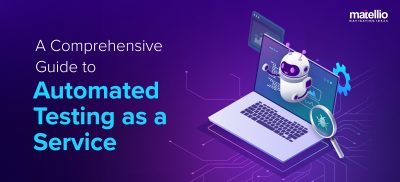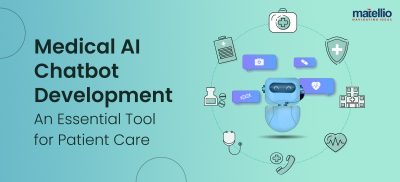
Without security oversight, the fast code changes and frequent deployments created by DevOps can create a flood vulnerabilities. These security gaps can lead to loss of data, damaged systems, or theft of code. Such issues can undermine the benefits of DevOps. Teams must halt progress to repair issues and users are put at risk by new releases.
To ensure that DevOps strategies produce reliable, safe releases, security teams need to get involved. In this article, you’ll learn how DevOps and security can combine forces. You’ll learn about some of the common issues faced when combining security and DevOps. You’ll also be introduced to a few best practices for ensuring a successful DevSecOps strategy.

DevOps Security vs DevSecOps
Incorporating DevOps and security aims to shift security from the end of development. Shifted-left security addresses vulnerabilities throughout the software development lifecycle instead of just the end. The most effective way of combining DevOps and security is through the creation of DevSecOps teams. The goal of DevSecOps is to “fail faster”. These teams work to identify issues early on so vulnerabilities can be fixed before becoming a risk in production.
DevSecOps, like DevOps, requires collaboration and trust between team members. To establish a successful DevSecOps team, you need:
- Strong communication
- Team buy-in
- Extensive cross-training or skill-sharing
Common DevSecOps Challenges
When incorporating security in DevOps environments, there are several common issues you might face.
1. Productivity Blocks
Teams often have trouble incorporating security processes and requirements in a way that does not impede development speed. Testing and code reviews can be slow and uncover issues that take time and effort to fix. Additionally, security teams have traditionally acted as gatekeepers, blocking release until test conditions are satisfied.
To avoid having their pace slowed, developers and operations members may be tempted to bypass security. They may merge or push code to production before changes have been checked or verified. Failure to follow security processes can lead to issues such as insecure code, vulnerable dependencies, or misconfigurations in production.
2. Cultural Resistance
Integration requires patience and communication, which team members may take for granted. Members of DevSecOps teams come from different backgrounds with different skill sets, agendas, and vocabulary.
Integrating teams requires you to adapt processes, procedures, and tooling to account for these differences. It also requires increased communication and patience while team members learn others’ goals and workflows. Frequently, team members are resistant to these changes which may seem like extra work with no pay-off.
3. Cloud Services
Many DevOps processes occur in cloud environments and many tools are cloud-based. While the cloud increases accessibility and often performance, it also increases attack surface through Internet connectivity. Likewise, the cloud makes your entire codebase potentially accessible to attackers.
Cloud-based systems can be harder to monitor and maintain. There is often less visibility into systems and settings than on-premise infrastructure. Visibility is a particular problem if teams are using cloud-based tools without informing security members.
4. Secrets Management
The term secrets refers to information used to secure systems, such as API keys, credentials, security certificates, or encryption keys. DevOps pipelines are frequently constructed from a large number of tools that all require secrets management. This management can quickly become overwhelming.
Additionally, most DevOps processes are interconnected and utilize secrets to transfer permissions or grant access. These secrets are shared across applications, containers, cloud instances, and users. Each time a secret is shared, it is at risk of being stolen or corrupted. If secrets are compromised, your entire system is at risk.
Best Practices for Implementing DevSecOps
To address these issues and ensure smooth integration you need to build security into every aspect of the DevOps cycle. The following best practices can help get you started.
1. Ensure Security Isn’t Blocking Productivity
Teams will find ways around security if it causes bottlenecks or blocks processes. To avoid this, security needs to be fully integrated, automatic, and minimally invasive. Scans should be performed in real-time and results should be immediately accessible. Test processes should integrate directly into existing tooling and development environments.
You can accomplish this integration with Static Application Security Analysis (SAST) or Dynamic Application Security Testing (DAST) tools.
- SAST tools— Scan static code for vulnerabilities, syntax issues, or logical faults. These tools can integrate directly into many development environments and code editors.
- DAST tools— Scan applications during runtime and identify environment, configuration, and user-based vulnerabilities. You can integrate these tools into build processes and schedule tests to run before delivery processes.
It’s important to increase visibility for everyone so issues can be clearly understood and addressed when found. Additionally, you can use feedback loops that enable development tasks to proceed automatically when tests are passing. This prevents gatekeeping or slowdowns due to manual sign-offs.
2. Patching and Vulnerability Management
DevOps teams frequently use open-source code, either in tooling or directly in projects. Code and tooling can be incredibly powerful and can significantly benefit development processes. Unfortunately, the nature of open-source creates inherent security risks you need to address.
You need to go to extra effort to ensure that open-source code remains up-to-date. Unlike with proprietary software, updates and patches are often not pushed. Additionally, there is limited support if changes are not compatible with your environment or projects. It is your responsibility to track all tools and open-source dependencies in your projects, and patch accordingly.
The most convenient way to do this is with Software Composition Analysis (SCA) tools. These tools create an inventory of your components. SCA tools often integrate with vulnerability databases and other sources of threat data to alert you to known vulnerabilities. Employing SCA tools can provide you with visibility into your dependencies and ensure that vulnerabilities are addressed system-wide.
3. Maintain Secure Environments
To ensure that development and release environments remain secure, you need to continuously monitor and maintain system visibility. This means understanding what tools are in use and how teams are using tools. It also means isolating environments with access controls, and ensuring that all connections occur through encrypted networks.
Your teams and tooling should be creating new environments for each build and testing session. A fresh environment ensures consistency and reduces the possibility of contamination or compromised access. It also ensures that data from previous builds or tests do not influence future testing or processes. These new environments should be created from a trusted copy for consistency.
Conclusion
Adopting DevSecOps can enable you to continue producing releases at speed while reducing risk of data loss or breach. It also shows a commitment to security and data protection to your team and your user base. Successfully integrating security into DevOps, however, takes commitment and a willingness to adapt.
Hopefully, this article helped you understand some of the challenges you are likely to face in implementing a DevSecOps strategy. Understanding these challenges and applying the best practices introduced here can help you start using DevSecOps and improving your application security.


